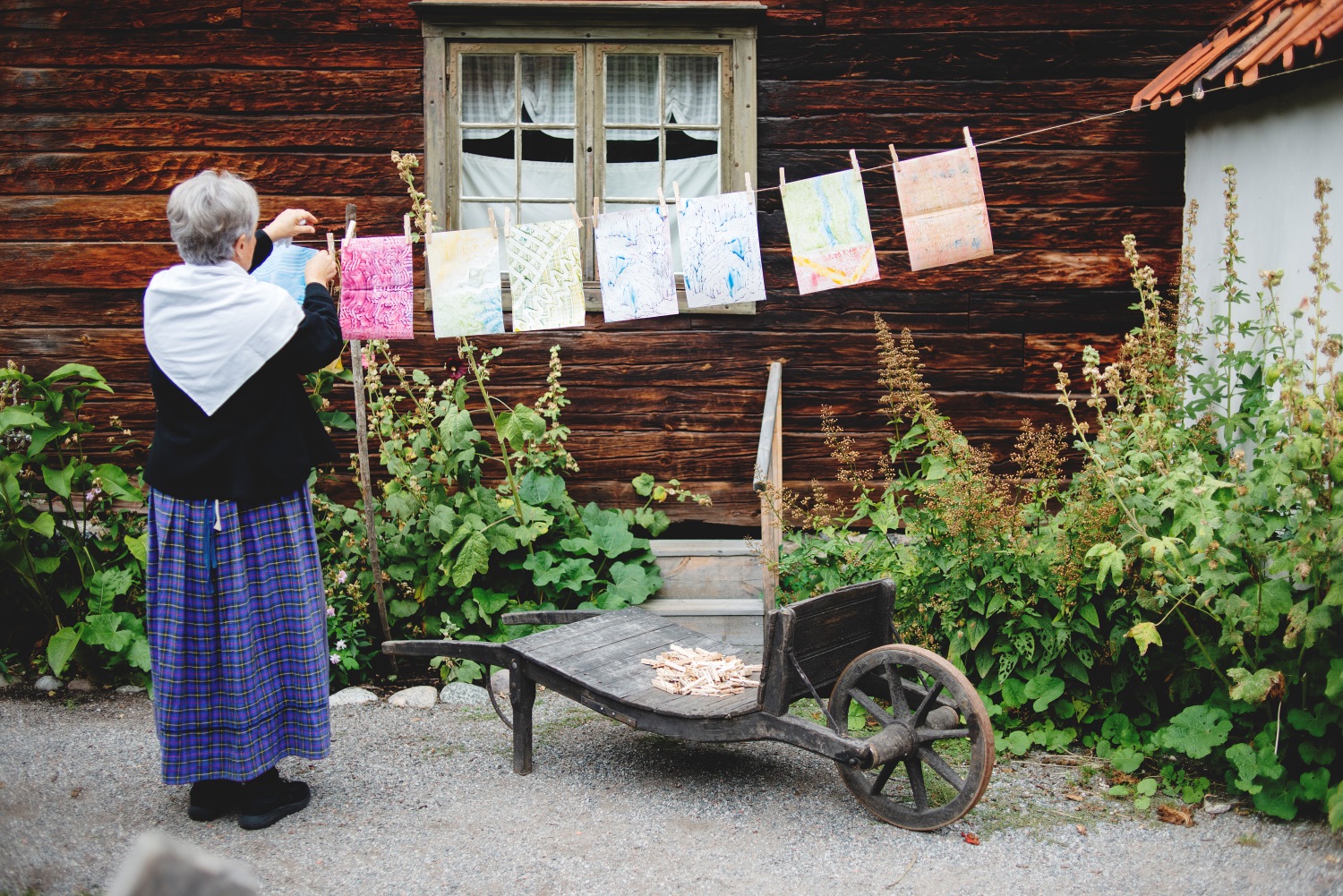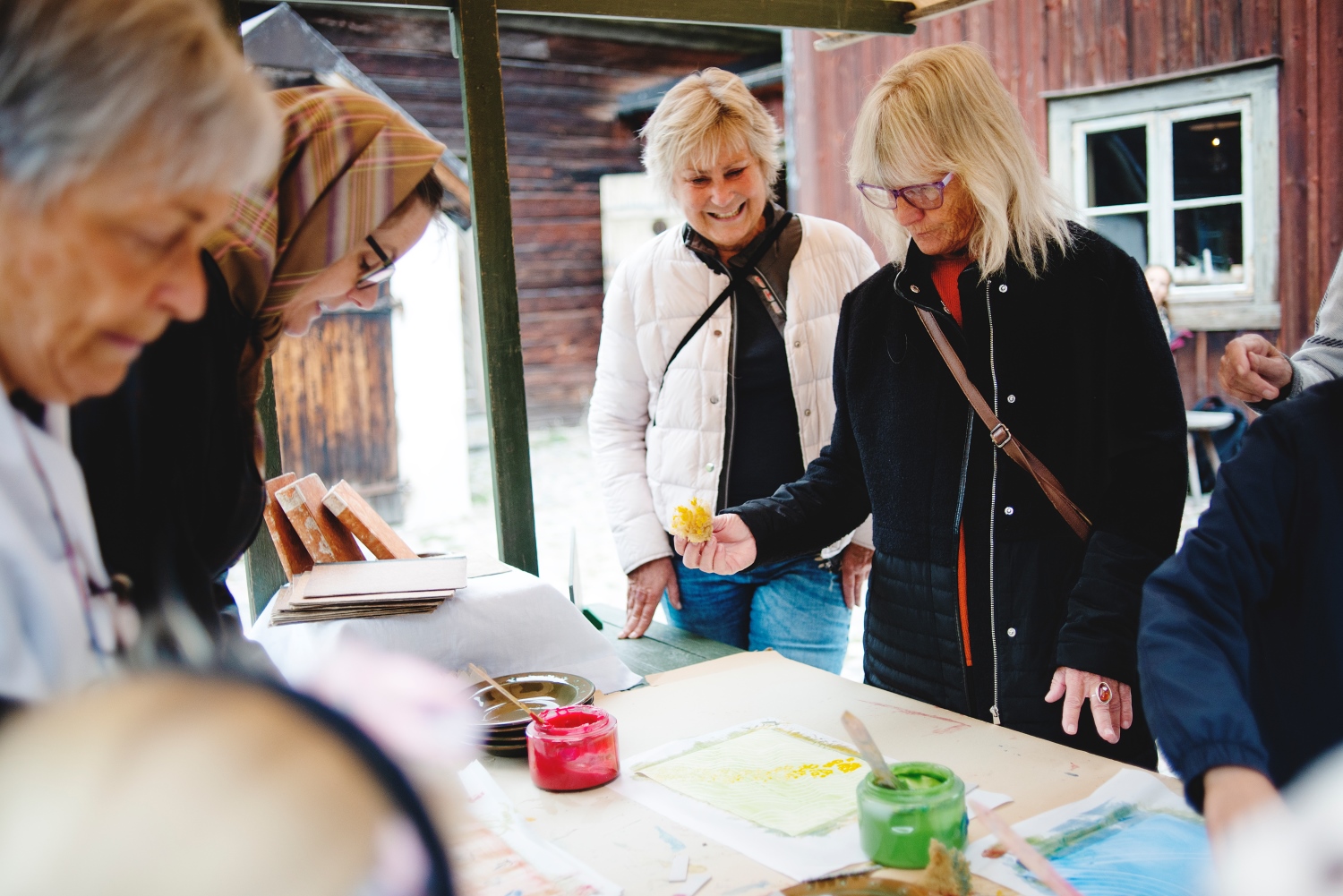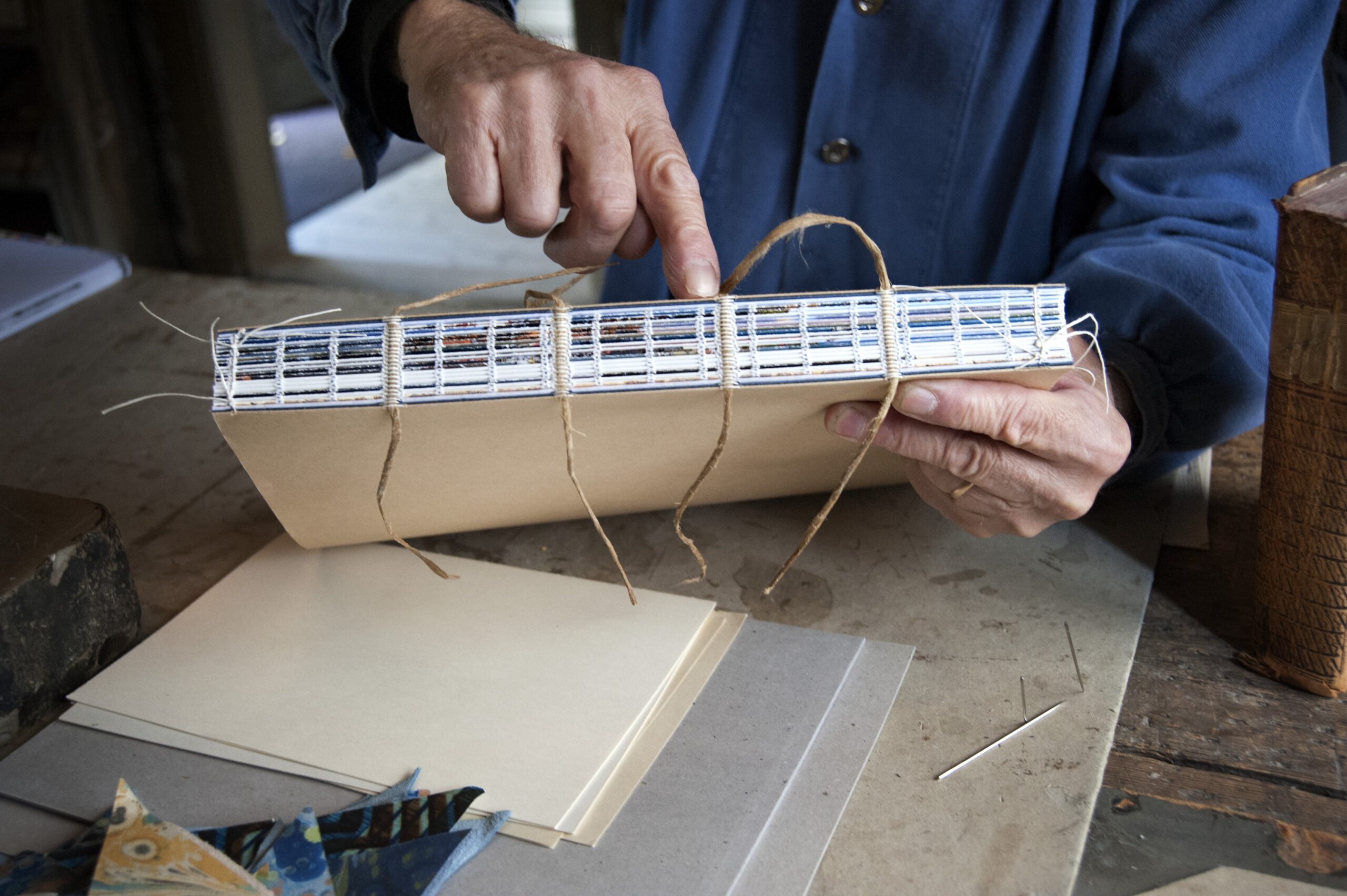Binding a book
In Sweden, literacy rates increased during the 1830s and 1840s and bookbinders bound different types of literature. The pages for a book were printed at a printer’s workshop before being taken to the bookbinder, who put them together. The bookbinder began by folding the printed sheets in half. The sheets were sorted into sections and placed in a press overnight to flatten them. The sections were then attached with a needle and thread, in a process called binding. After that, the sheets were cut and attached to the cover of the book.
There were different ways to design a book. Cheap entertainment literature was bound together in simple pasteboard bindings, while more expensive books were given leather covers with gold detailing. Other books were covered with cloth. Endpapers and covers could be marbled with paste and paint using a technique known as paste marbling, and a thin comb could be used to produce different patterns.
An evolving craft
At the turn of the 20th century, print-runs of books became larger and machines were introduced into production. Today, bookbinding is more or less computerised. However, it is still possible to train in the traditional craft of bookbinding.
With the Bookbinder’s workshop, where real craftspeople can demonstrate and describe the art of bookbinding, Skansen wants to contribute to the preservation of our intangible heritage and keeping craft skills alive today.






